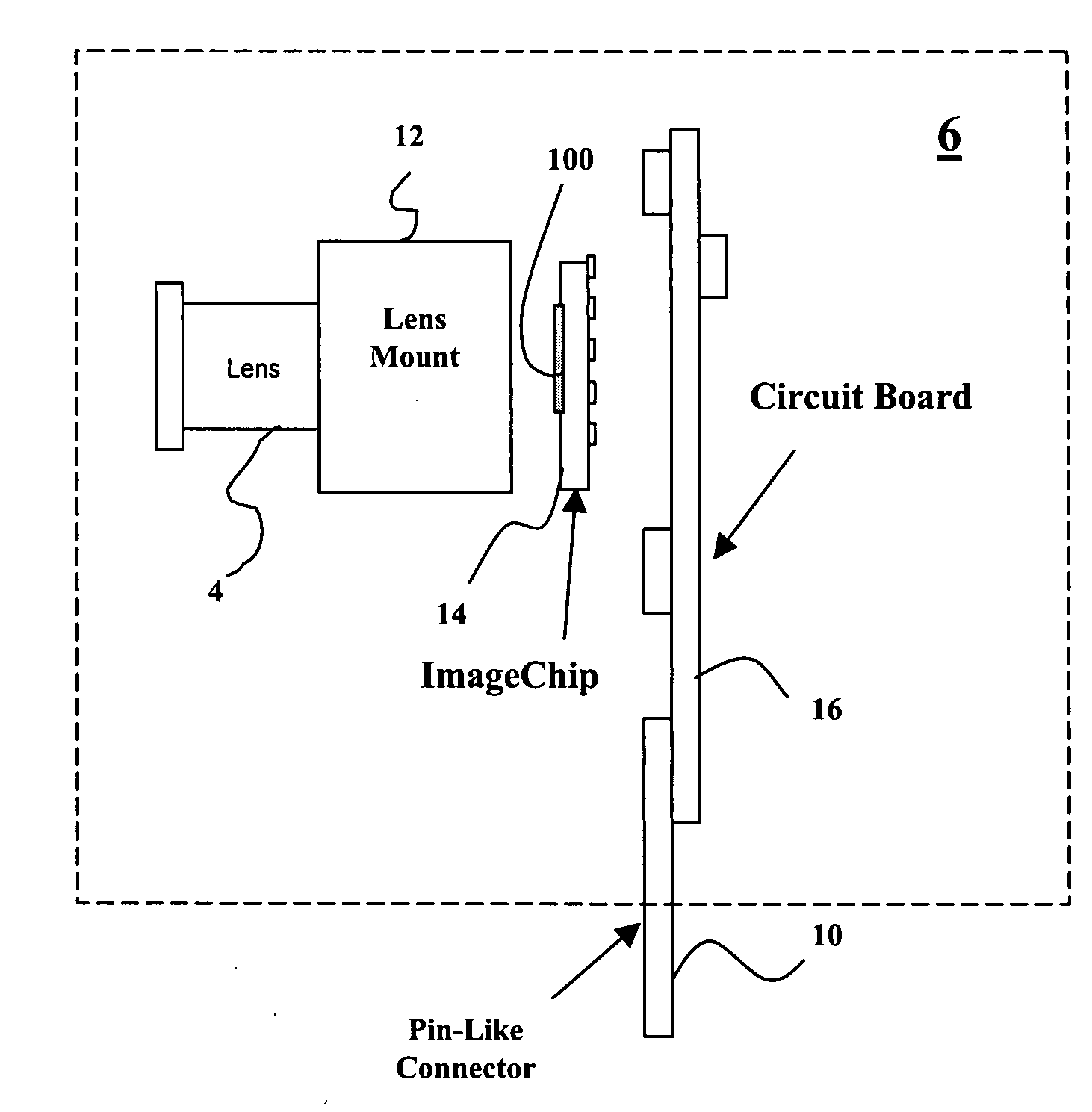Electronic image sensor
a sensor and electronic technology, applied in the field of cameras and camera components, can solve problems such as lowering the frame rate, and achieve the effects of avoiding prior art complications inherent, adequate exposure, and excellent image quality
- Summary
- Abstract
- Description
- Claims
- Application Information
AI Technical Summary
Benefits of technology
Problems solved by technology
Method used
Image
Examples
Embodiment Construction
[0009] In a preferred embodiment the predetermined normal video frame rate is determined by a master clock frequency signal (at for example 12 MHz) divided by the product of two numbers representing: (1) the maximum number of rows of pixels, row-max and (2) the maximum number of columns of pixels, col-max. Default values of these two numbers are preferably factory set (for example, at 508 for row-max and 782 for col-max) by the sensor fabricator providing a frame rate of 30.2 Hz. With this frame rate the predetermined normal maximum per frame exposure time is about 33 milliseconds. However, in this embodiment, provisions are made for a calculation of new row max values that are used instead of the factory set value of row-max whenever necessary to reduce the frame rate to achieve desired exposures in low light levels.
[0010] In this preferred embodiment charges generated in the pixels of each row of pixels are collected for a controlled period of time within the range of 65.2 micros...
PUM
 Login to View More
Login to View More Abstract
Description
Claims
Application Information
 Login to View More
Login to View More - R&D
- Intellectual Property
- Life Sciences
- Materials
- Tech Scout
- Unparalleled Data Quality
- Higher Quality Content
- 60% Fewer Hallucinations
Browse by: Latest US Patents, China's latest patents, Technical Efficacy Thesaurus, Application Domain, Technology Topic, Popular Technical Reports.
© 2025 PatSnap. All rights reserved.Legal|Privacy policy|Modern Slavery Act Transparency Statement|Sitemap|About US| Contact US: help@patsnap.com



